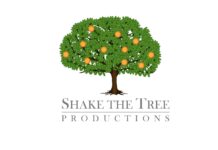The Content Marketing Engine: Turn Your Podcast Into a Lead and Brand Magnet
Most podcasters make great content.
Few use it to grow anything beyond the mic.
But when done right, your podcast can become a high-performance content marketing engine — one that builds your list, drives conversions, and scales your brand without pushy tactics or salesy awkwardness.
This guide shows you exactly how to use your podcast as content marketing — turning episodes into assets that fuel your funnel and grow your authority over time.
First: Clarify the Business Goal Behind Your Podcast
If you’re using your podcast for content marketing, ask:
-
What’s the one action you want listeners to take?
-
What problem do you help them solve?
-
Where does your podcast fit in your customer journey?
A few examples:
-
Coaches → Use the podcast to build trust, then offer a free call
-
️ SaaS founders → Use the podcast to showcase customer stories and link to demos
-
Course creators → Use the podcast to teach, then drive to an email opt-in
Your podcast should nurture awareness and earn trust
two of the hardest things to buy with ads.
Step 1: Build a Podcast Funnel That Converts
A podcast funnel is simple:
Podcast Episode → Lead Magnet → Email List → Offer
Here’s how to make it work:
Insert Strategic CTAs
Every episode should have a call-to-action (CTA) — not just “subscribe.”
Examples:
-
“Grab the checklist for today’s episode at [link]”
-
“Want help applying this? I break it down weekly in my free newsletter.”
-
“Join the waitlist for my program at [link]”
Put your CTA:
-
In the intro or mid-roll (not just the outro)
-
In the show notes
-
In the blog version of your episode
-
In guest mentions (“[Guest] also has a free guide on this — linked below!”)
Offer a Lead Magnet That Ties to the Topic
Don’t just drop a generic freebie. Create episode-aligned lead magnets.
Examples:
-
Episode: “How to Price Your Freelance Services”
Magnet: “Freelancer Pricing Calculator Spreadsheet” -
Episode: “Landing Page Tips That Convert”
Magnet: “10 High-Converting CTA Templates”
Even if the lead magnet is recycled across episodes, frame it differently to match context.
✍️ Step 2: Design Episodes Like Content Assets
Great content marketing isn’t random — it’s strategic.
Start treating episodes like pillar content:
-
Answer a core audience question
-
Include an original framework or takeaway
-
Link to related content in your funnel (blog posts, videos, emails)
-
End with an invitation to go deeper
Your podcast isn’t just a conversation — it’s positioning.
Step 3: Build Your Email List With Every Episode
Email isn’t dead. It’s your most valuable channel for conversion and control.
Ways to tie podcast into email:
-
Weekly newsletter that expands on the episode
-
Behind-the-scenes insights (e.g. “What I learned from this guest that didn’t make the final cut”)
-
Follow-up sequences for people who download your lead magnets
Use tools like ConvertKit, Beehiiv, or Substack to set up:
-
A welcome sequence
-
An evergreen nurture series
-
Targeted offers based on interests
Example: Someone downloads your “Productivity Toolkit” → Gets a 3-part email series → Gets invited to your paid course
Step 4: Use Podcast Content in Your Sales Funnel
People buy from those they trust. Your podcast is long-form trust-building.
How to plug podcast into your funnel:
-
Include relevant episodes in email nurture sequences
-
Create a “Start Here” playlist for new leads or subscribers
-
Use podcast clips as retargeting ads
-
Send podcast content to prospects during your sales process
This helps your funnel feel educational, not just transactional.
Step 5: Turn Your Podcast Into a Magnet, Not Just a Megaphone
The mistake? Thinking content = marketing.
In reality, it’s only marketing if it moves someone closer to a goal.
Add Magnetic Layers:
-
Create series-based content (e.g. “The Launch Sprint” → 3 parts, each with a CTA)
-
Use cliffhangers or multi-part formats to boost retention
-
Co-create content with guests who have large audiences
-
Host community events tied to episodes (Q&As, roundtables)
Make listeners feel like they’re part of something — not just consuming it.
Authority-Building Tactics (Without Bragging)
Done right, your podcast also builds thought leadership.
Tactics:
-
Name your own frameworks or methods (e.g. “The 4M Content Model”)
-
Invite credible guests, but own the insight
-
Publish solo episodes that go deep (great for positioning)
Remember:
People trust voices more than blogs. Your voice is your brand.
✅ TL;DR – How to Use Your Podcast as Content Marketing
-
Know your podcast’s role in your business funnel
-
Add lead magnets and CTAs tied to each episode
-
Use your podcast to grow and nurture your email list
-
Build episodes around searchable, useful, evergreen topics
-
Plug episodes into your marketing funnel, nurture emails, and sales process
-
Think “content asset,” not just “content release”
-
Position your podcast to build brand and trust, not just downloads
Joe Wehinger (aka Joe Winger) has 25 years of entertainment experience and 10 years in business working with Golden Globe winning, Emmy Winning, Hall of Fame inductee entertainment legends and business titans around the world. In addition to being a Directors Guild member and a certified Executive Producer (specialist in investor agreements, tax incentive, private financing), he runs the global digital marketing agency United Digital for over 12 years helping projects around the world create life-changing profits and positive impact. Today he’s studying how AI will interrupt and evolve our future.



![Challenge Butter’s Quiet Luxury of Better Flavor at Home with Cubes and Decorative Snowflake [Interview with Maheen Khan] Challenge Butter blends California heritage, clean ingredients, and innovation to elevate everyday cooking](https://dailyovation.com/wp-content/uploads/2026/01/butter1-218x150.webp)













![From Medical Miracles to Movies: Indie Film, Bourbon, and Giving Back [Interview with Producer George Ellis] Dr. George Ellis shares how indie film, bourbon, and purpose collide](https://dailyovation.com/wp-content/uploads/2026/01/george-ellis-headshot-218x150.jpg)















